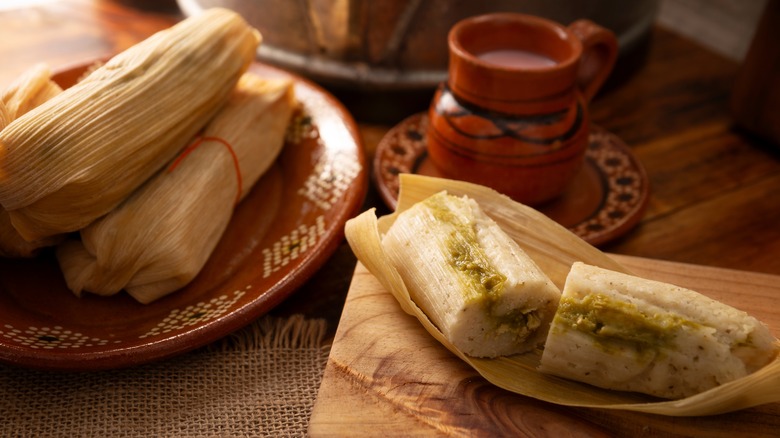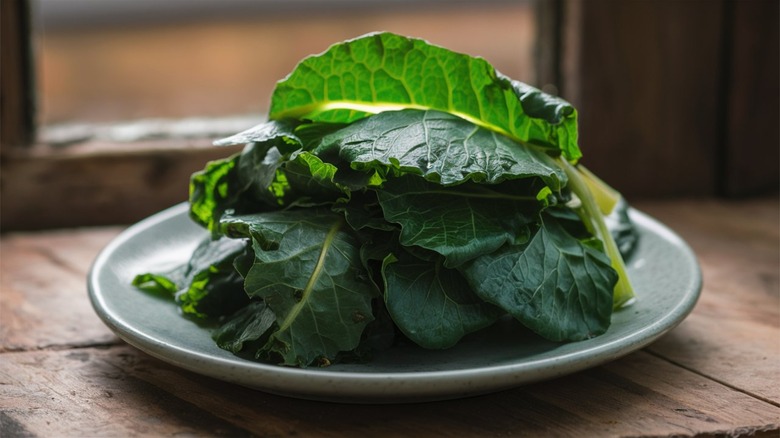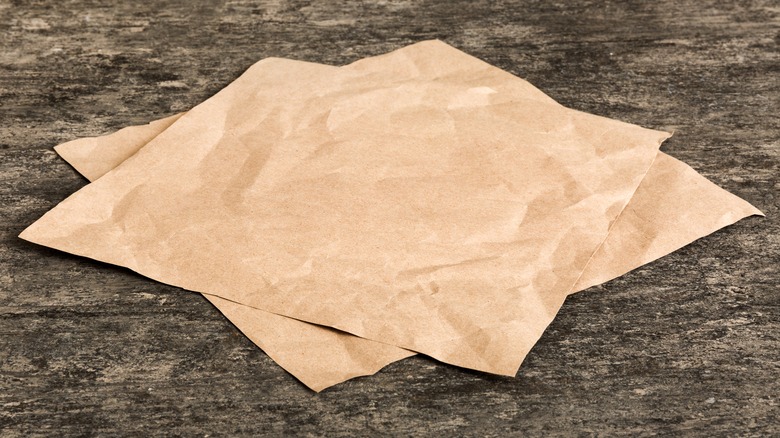2 Easy Swaps If You Can't Find Corn Husks Or Banana Leaves For Tamales
Tamales are one of the great pillars of Mexican cuisine, but one that Americans have always seemed a bit behind the curve on. For decades, most of us only knew canned tamales, but they've mostly gone the way of canned foods no one eats anymore. With the number of Mexican restaurants in the United States growing rapidly, more people are experiencing authentic Mexican cuisine, and there's a lot to explore. Per the Los Angeles Times, there are over 500 varieties of tamales in Mexican cuisine alone.
Rick Martínez, author of the cookbook Mi Cocina, has sampled many of these varieties in his extensive travels throughout Mexico, and he wants people all over the world to embrace a wider perspective on Mexican cuisine. Making tamales at home is a terrific, hands-on way to do this, but the customary choices for wrapping tamales — corn husks and banana leaves — aren't exactly staples in many American homes.
Fortunately, you could substitute these choices for either parchment paper or collard greens. Though neither is traditional for wrapping tamales, they offer a last-minute solution if you can't find corn husks or banana leaves at any of your local stores. Of these two substitutes, Martínez has a clear preference.
Collard greens are the better choice
The reason that Rick Martínez favors collard greens as a last-minute substitute for corn husks or banana leaves is all about flavor. "I didn't know this until I started eating the Oaxacan tamales," he notes, citing a regional style that favors banana leaves for tamales, "but the banana leaf actually imparts a lot of flavor." To approximate that, you need to wrap your tamales with a different plant product, and Martínez recommends collard greens for this purpose.
Using collard greens for tamales does pose a bit of a challenge. First, you need to know how to clean collard greens thoroughly (which involves soaking them for around 15 minutes in water or a mixture of water, white vinegar, and salt before rinsing), after which you'll have to grab a knife. As Martínez points out, "you'd have to take the stem out or else it's not going to wrap". However, collard greens have an advantage in that you can cook them for hours and they will still hold their shape. There's also an interesting potential in using collard green for tamales because, unlike corn husks or banana leaves, they are edible, meaning you could eat the entire tamal — wrapper and all — as one package.
Parchment paper is an effective last resort
Of all the potential wrappers for tamales, parchment paper is the one most people are likely to have on hand in their kitchen. It's a staple because it's incredibly versatile, and there are many parchment paper cooking hacks to try beyond this one. Like corn husks and banana leaves, parchment paper is flexible without being fragile, and it will not break down when exposed to heat. However, it won't contribute any flavor to your tamales, and you will need to put in some work to pull it off.
Rick Martínez considers parchment paper an acceptable substitute, but "you would need to cut it up into little squares," he notes, to make even-sized tamales. He recommends cutting the parchment into squares of six-by-six to eight-by-eight inches. A bigger square of parchment will make it easier to fill and shape the tamal. This is a more common method of wrapping tamales than you might expect, and there are actually companies that produce parchment paper specifically shaped for tamales. At that point though, you might as well just buy the corn husks.


